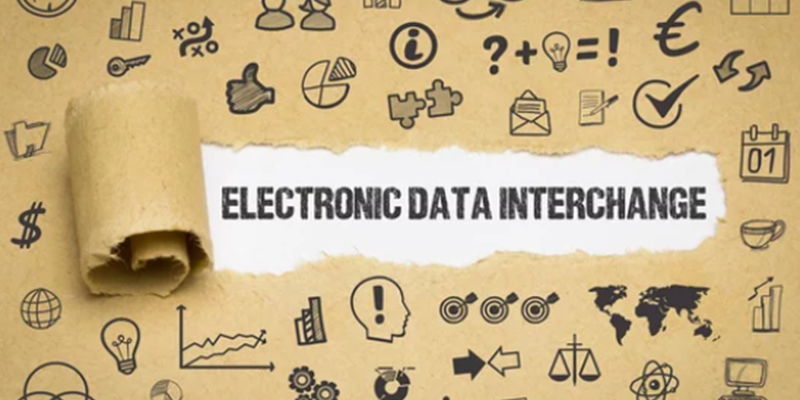In today’s fast-paced business environment, Electronic Data Interchange (EDI) has become an integral part of supply chain operations. It streamlines communication and improves efficiency by automating the exchange of business documents between trading partners. However, there may come a time when switching EDI providers becomes necessary. Whether due to changing business requirements, dissatisfaction with current services, or technological advancements, a seamless transition is crucial to ensure uninterrupted operations. This article provides a comprehensive guide on the best practices for switching EDI providers.
The importance of a methodical and thoughtful approach
Switching EDI providers is not a decision to be taken lightly. The impact on your operations can be significant, making a methodical and thoughtful approach essential. Rushing into a change without proper planning and evaluation can lead to costly disruptions, compromised data integrity, and unsatisfactory outcomes. By following a well-structured process, you can mitigate risks and maximize the benefits of switching providers.
Step 1: Understanding Your Current EDI Usage and Assessing the Need for Change
Before embarking on a transition, it is crucial to evaluate your current EDI usage. Gain a clear understanding of the strengths and limitations of your existing provider. Assess the reasons why a change is necessary by considering factors such as scalability, service quality, cost-effectiveness, technological advancements, and future business requirements. Identifying pain points and areas for improvement will help guide your decision-making process.
Step 2: Identifying Your Requirements from a New EDI Provider
Once you have identified the need for a change, it is essential to define your requirements from a new EDI provider. Determine the specific functionalities, features, and services that are non-negotiable for your business. Consider elements such as document support, trading partner connectivity, system integration capabilities, customer support, security measures, and compliance with industry standards. Thoroughly research potential providers to ensure that they can meet your specific needs.
Step 3: Conducting a Comprehensive Gap Analysis to Identify Areas for Improvement
To seamlessly transition to a new EDI provider, it is vital to conduct a comprehensive gap analysis. Compare your current EDI setup to the desired state with the new provider. Identify gaps in terms of technology, processes, resources, and knowledge. This analysis will provide clarity on what needs to be addressed during the transition and guide the implementation plan.
Step 4: Clearly Communicating Organizational Goals and Expectations to the New Provider
Once you have selected a new EDI provider, effective communication becomes key. Clearly articulate your organizational goals, expectations, and specific requirements to the provider. Establish a collaborative partnership by fostering open and transparent communication channels. This will ensure that the provider fully understands your needs and can tailor their services accordingly.
Step 5: Defining Deliverables, Timelines, and Milestones with the New Provider
To maintain a structured transition process, it is crucial to define the deliverables, timelines, and milestones with the new provider. Outline the specific tasks, responsibilities, and deadlines involved in the implementation. Breaking down the transition into manageable segments will facilitate progress tracking and ensure the timely completion of the switch.
Step 6: Emphasizing Effective Communication During the Transition Period
During the transition period, effective communication is vital. Maintain regular contact with both your internal team and the new provider. Address any concerns or issues promptly and keep all stakeholders well-informed about the progress. This transparency will foster confidence and help overcome potential challenges.
Step 7: Developing an Implementation Plan Tailored to Your Business’s Specific Needs
Every business has unique requirements, and a one-size-fits-all approach to implementation is not suitable. Develop an implementation plan that is tailored to your business’s specific needs. Consider factors such as the complexity of your EDI setup, the volume of transactions, and the integration with existing systems. A well-structured implementation plan will ensure a smooth transition with minimal disruption.
Step 8: Appointing a Project Lead to Oversee the Transition Process
Assigning a project lead who will oversee the transition is vital for successful change management. This individual should possess strong project management skills, have an in-depth understanding of your business processes, and be proficient in EDI. The project lead will coordinate activities, manage timelines, address any bottlenecks, and ensure a seamless transition from start to finish.
Step 9: Monitoring and Assessing the System During the Initial Go-Live Period
After switching to the new EDI provider, closely monitor the system during the initial go-live period. Continuously evaluate the performance, reliability, and accuracy of the solution. Identify any post-implementation issues promptly and work closely with the provider to address them. Regularly monitor key performance indicators to assess the success of the transition and identify areas for further improvement.
Switching EDI providers is a complex endeavour that requires careful planning, communication, and execution. To ensure a smooth transition, consider seeking expert guidance and support from a reputable EDI provider like Vantree Systems. Their experience and expertise will guide you through each step of the process, mitigating risks and ensuring a successful and seamless switch. Remember, a methodical and thoughtful approach is essential for minimizing disruption and maximizing the benefits of switching EDI providers.

